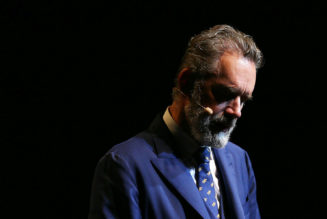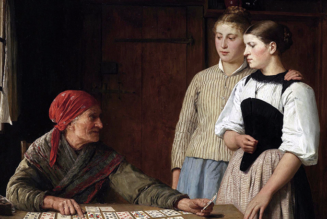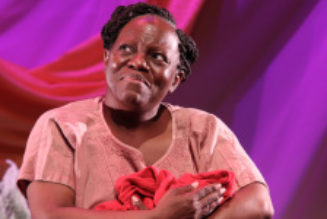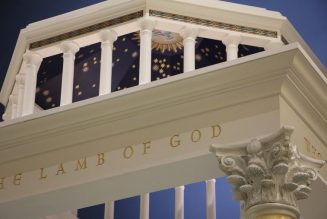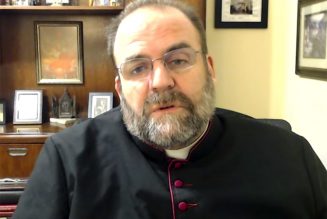
Editor’s Note: This article is part of the Register’s symposium on Vatican II at 60.
For Catholics too young to remember the immediate post-conciliar period, the 60th anniversary of Vatican II offers a chance to relive the past. The Church is going backwards. There is a wide consensus on that. There is disagreement over the precise historical destination.
With increasingly pointed rhetoric, Pope Francis denounces those who commit the “sin of backwardism” — a neologism he coined to characterize those he believes want to go back to before the Second Vatican Council.
The nearly 10-year pontificate of Pope Francis seems, on the other hand, to feel most comfortable in the immediate post-conciliar period of the late 1960s and 1970s — before Veritatis Splendor (1993), the Catechism of the Catholic Church (1992), the theology of the body (1979-1984), Familiaris Consortio (1980) and perhaps even the entire project of St. John Paul II (elected 1978) in stabilizing the Church after a decade of turmoil.
That’s the judgment of Cardinal Angelo Scola, former archbishop of both Milan and Venice, and a leading figure in the Church from the 1970s until his retirement in 2017. He published an interview book, Betting on Freedom: My Life in the Church in November 2021. There, the prelate of long experience and widespread esteem said that the Church is going backwards, ironically pushed by those who incessantly clamor that the Church needs to radically move forward, lest she fall behind contemporary culture. This provokes the “backwardist” reaction that Pope Francis denounces.
“To those that think that the Church has fallen behind, I respond that we are rather going backwards, specifically to the epoch of the debates between conservatives and progressives after the Council,” Cardinal Scola wrote. “I am seeing a renewed opposition, with much overexcitement, between guardians of tradition as rigidly understood and the proponents of conforming practices, but also doctrine, to worldly demands.”
The Year of Faith on the 50th
In October 2012, Pope Benedict XVI inaugurated a “Year of Faith,” marking the 50th anniversary of the opening of Vatican II and the 20th anniversary of the Catechism of the Catholic Church. He noted that St. Paul VI had declared a “Year of Faith” in 1967-1968, immediately after the Council, when the ship of faith was in perilous waters.
“In some respects, [Pope Paul VI] saw this year as a ‘consequence and a necessity of the post-conciliar period,’ fully conscious of the grave difficulties of the time, especially with regard to the profession of the true faith and its correct interpretation,” wrote Benedict.
From the synods on the family and the Amazon to the current synodal process on synodality for a synodal Church, there has been no shortage of voices demanding “conforming practices, but also doctrine, to worldly demands,” in Cardinal Scola’s words. Hence the countervailing need, as Benedict wrote, to attend to “the profession of the true faith and its correct interpretation.”
Benedict XVI would abdicate during the Year of Faith. It was a profoundly destabilizing step — all the more remarkable for having no precedent in the entire history of the Church. In retrospect, it should have been expected that such a remarkable novelty would stir up turbulent waters.
Ten years on, and the Holy Father’s synodal process on synodality for a synodal Church is already threatening shipwreck, as the German Synodal Way has introduced a spirit of conformity to the world even more pronounced than in the 1970s. This time, though, there are powerful voices — like Cardinal Scola — who do not want to go back to those years. Cardinal Scola is in retirement, but his viewpoint has been forcefully articulated by large groups of bishops, including the bishops of Poland and of Scandinavia, Germany’s neighbors.
Ressourcement, Aggiornamento, Indietrismo
The approach of Vatican II has been described using French and Italian terms: ressourcement and aggiornamento.
Ressourcement means going back to the sources — above all sacred Scripture, complemented by the Church Fathers and the achievements of Scholastic theology.
Aggiornamento means “updating” — finding new ways to proclaim the Gospel in a manner suited to a post-Enlightenment world deeply scarred by two world wars, the rise of totalitarian atheism and disenchanted by secular liberalism.
A healthy tension between the two always exists and errors of excess are to be found in both directions. It has ever been such, for the “kingdom of heaven is like a householder who brings out of his treasure what is new and what is old” (Matthew 13:52).
Alongside ressourcement and aggiornamento, Pope Francis has introduced another word, an Italian word of his own invention, indietrismo — best translated into English as “backwardism.” He brandishes it against those he most frequently disparages, Catholics attached to traditional doctrine, morals or liturgy.
“This is today’s problem, of many who call themselves ‘traditional,’” the Holy Father said while airborne en route to Rome from Canada last July. “No, they are not traditional. They are indietristi, people who look to the past, going backward, without roots. And looking ‘backward’ is a sin because it does not progress with the Church.”
Sin is a rather serious matter, so it is important to distinguish indietrismo from ressourcement, which characterized the theology of many greatly learned men, such as Cardinal John Henry Newman, whom Pope Francis canonized in 2019. Indeed, Newman, who died in 1890, has been called the “Father of Vatican II.”
Newman was not a backwardist, even as he immersed himself in Scripture and the patristic literature.
The Holy Father explains that instead of backwardism it is necessary to go upward — and downward. “Tradition is precisely the root of the inspiration to go forward in the Church,” Pope Francis further explained. “And this is always vertical. And ‘backwardism’ is going backward; it is always closed. It is important to understand well the role of tradition, which is always open, like the roots of the tree, and the tree grows like that. … It is always the sap of the root that carries you forward, forward, forward. … So for that reason, we must think and carry forward faith and morals. As long as it is going in the direction of the roots, of the sap, it’s good.” “Backwardism” is horizontal and sinful; rather, one should move upward, as a tree grows, but also downward “in the direction of the roots.” And “the sap carries you forward, forward.” So horizontal is bad; vertical is good, but to go up it is necessary to go down in order to move forward, which trees do not do, but the Church does.
It all can appear a bit confusing. But there is one unmistakable clarity in the new papal vocabulary: One cannot go backwards.
Smoke of Satan
And yet the Church finds itself in 2022 as if it is 1972 all over again, when St. Paul VI famously spoke of the “smoke of Satan” having entered the “temple of God,” obscuring the hopes of 1962 and polluting the post-conciliar air.
St. Paul VI made clear in his closing address to Vatican II in 1965 that aggiornamento “was in no way an adaption of the Church to the world, as if the latter were supposed to establish norms for the former.” Too few were listening.
In a significant and welcome contribution to Vatican II’s 60th anniversary, George Weigel has released this month To Sanctify the World: The Vital Legacy of Vatican II. He shows how the aspirations of 1962 were apparently dashed by 1972, as a Church meant to be revitalized with new evangelical energy instead consumed herself with internecine debates about whether divine Revelation was still valid. Could God still be known and proclaimed to the world? And if so, would that be good for the world?
Weigel quotes Paul VI’s esteemed and close friend Jacques Maritain, who saw in the immediate aftermath of Vatican II “a kind of kneeling before the world,” a “complete temporalization of Christianity,” in which “there is no kingdom of God distinct from the world.”
“By the early 1970s,” Weigel writes, “the Church appeared to be coming apart at the seams — thanks to vast defections from the priesthood and consecrated religious life, open disdain for papal teaching among theologians and some bishops, and a rapid dissolution of Catholic practice at the grassroots.”
“Maritain, that great influence on the Second Vatican Council and defender of its achievements,” adds Weigel, “had presciently discerned a vast, post-conciliar confusion that was impeding the evangelical springtime for which John XXIII, Paul VI and Maritain himself had hoped.”
Clearing the Air
In Weigel’s telling, the nadir of 1972 was definitively answered by 1992 and the Catechism, the joint project of John Paul and Benedict, representative of a 40-year project, 1972-2012, to give Vatican II an authoritative and authentic interpretation. The abdication of 2013 then opened the door for backsliding under Pope Francis to the early 1970s, even as he inveighs against backwardism.
The synodal process of the synod on synodality for a synodal Church may well deliver the Church — one year from now and 10 years after the conclusion of Benedict’s Year of Faith — backwards 50 years to the early 1970s.
Yet those who desire to drag the Church back to 1972 will have to contend with the 40 years from 1972 to 2012, from St. Paul VI’s Evangelii Nuntiandi to Benedict’s trilogy of biblical theology, Jesus of Nazareth. Those who desire in 2022 to go back to 1972 have to contend with the colossus of 1992, the Catechism and the entire John Paul-Benedict project of which it was the capstone.
The ship of faith is being steered back to the rough waters of 1972. But this time she goes back with a great deal more ballast in the boat.
On the 60th anniversary of Vatican II, it may seem like the 10th anniversary again. But only in part, not in whole, and this time with many more discernible reasons for hope.
The year ahead will reveal who the true backwardists are.
Join Our Telegram Group : Salvation & Prosperity

